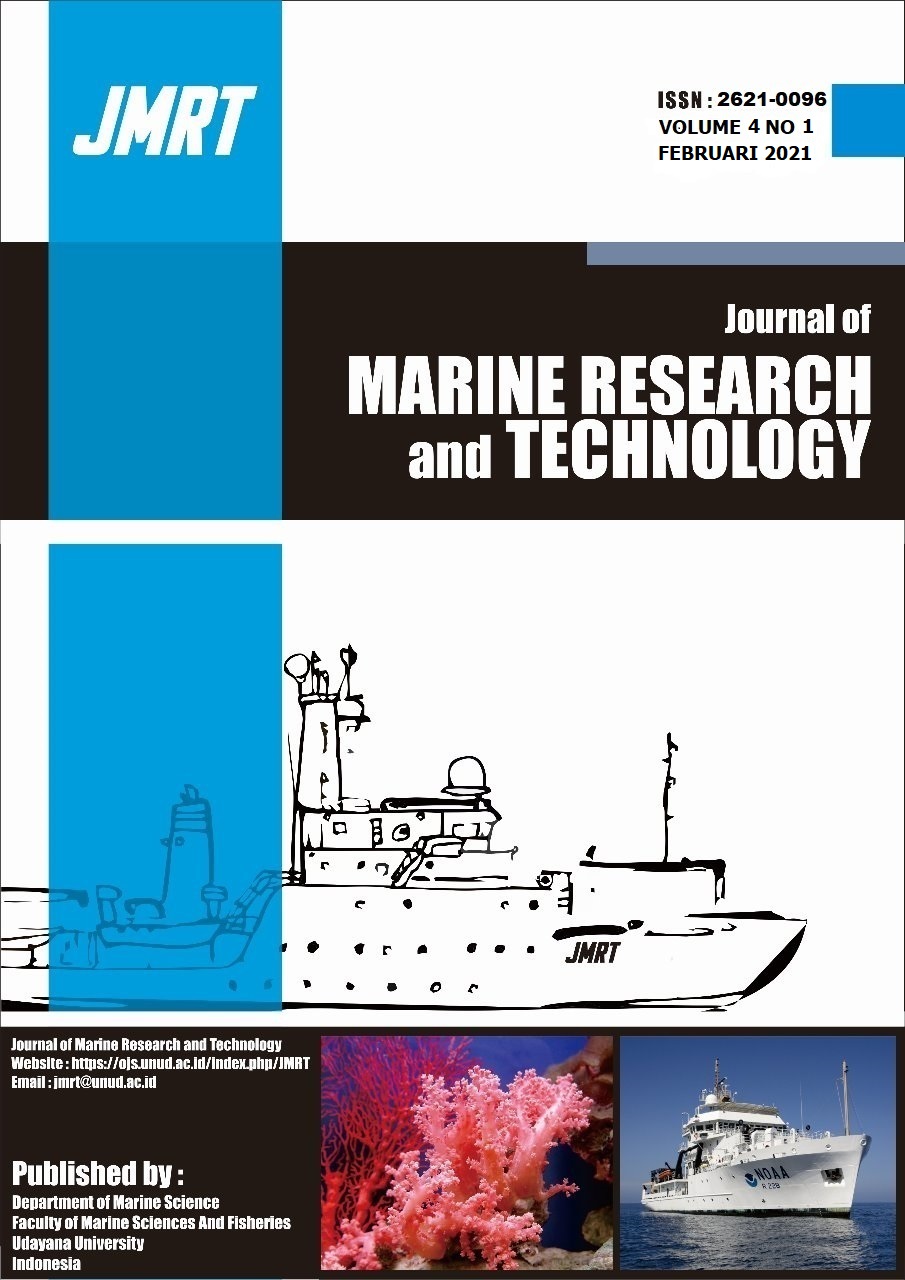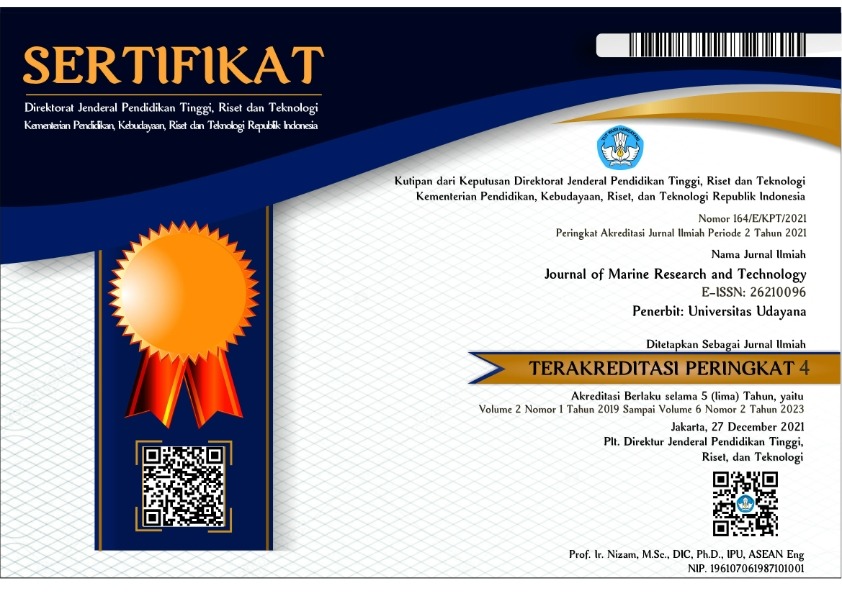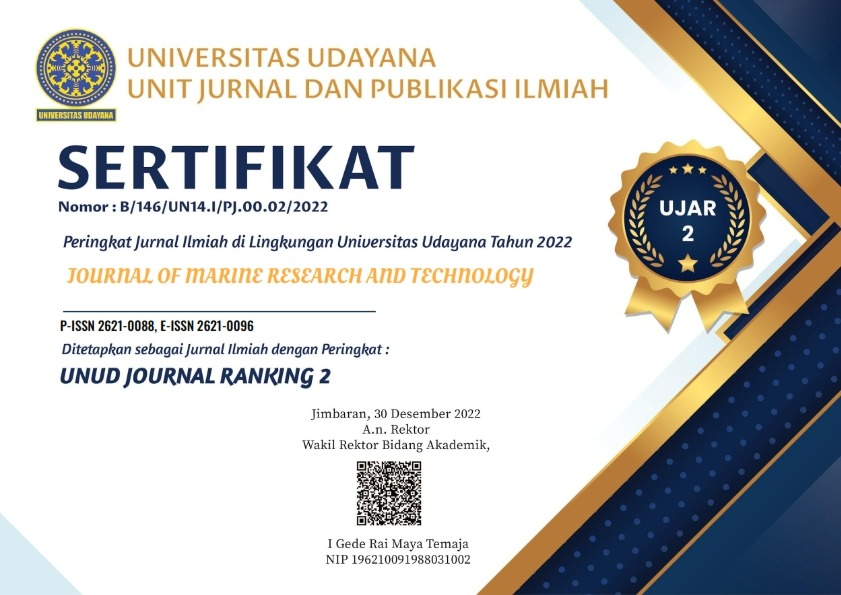Laju Pertumbuhan dan Tingkat Kelangsungan Hidup Transplan Karang Lunak Lobophytum strictum, Sinularia polydactyla dan S. asterolobata Pada Lokasi Budidaya Berbeda
Soft coral; Lobophytum strictum; Sinularia polydactyla; S. asterolobata; Transplantation; Culturing location
Abstract
Soft corals are the second-largest group of biotas that consist of coral reef ecosystem other than hard corals. The ecology function of soft coral such as a place to live and shelter various types of fish, soft coral also has a high economic value as an export commodity for the ornamental aquarium and the potency in pharmacology. The great economy potency can urge to uncontrolled natural taken. One of the alternatives is by culturing with transplantation method. Environment and different growth responses among soft coral species are the factors that shows the success method research used. The aims of this research were to examine the average growth rates of different transplanted soft coral species, culturing location, and the presence of interaction between different species of transplanted soft coral and culturing location towards growth rates. The average survival rates of different species of transplanted soft corals that cultured in a different location. Culturing location was located inside and outside of Pegametan bay, Buleleng regency. There were three soft coral species Lobophytum strictum, Sinularia polydactyla and S. asterolobata with five replicates each. The soft corals were fragmented with initial size ± 25 cm2 then sewed to the cement substrate. It was placed randomly to the transplant table at different culturing locations. The increased size of each transplanted soft coral species, the number of survivals and environmental parameters were observed in every two weeks for 12 weeks. Results showed that the average growth rates of soft corals significantly differed among species (P<0.05), whereas the average growth rates of transplanted L. strictum were the lowest among others. In contrast, the average growth rates of transplanted S. polydactyla, and S. asterolobata were not significantly different (P = 0.100) at all locations. The average growth rates of all transplanted soft corals were significantly lower when cultured inside the bay (P<0.05). It is found that the different average growth rates of transplanted soft corals were due to the interaction between soft coral species and location. The results also demonstrated that the average survival rates were significantly varied among transplanted soft coral species (P<0.05). All transplanted soft corals cultured outside of the bay reached 100% survival rates. It is suggested that the morphology and anatomy of each soft coral species and environmental conditions contribute to the success of soft corals transplantation.
Downloads
Copyright Notice
The copyright to this article is transferred to Journal of Marine Research and Technology (JMRT). The copyright transfer covers the exclusive right and license to reproduce, publish, distribute and archive the article in all forms and media of expression now known or developed in the future, including reprints, translations, photographic reproductions, microform, electronic form (offline, online) or any other reproductions of similar nature.






